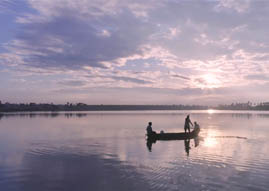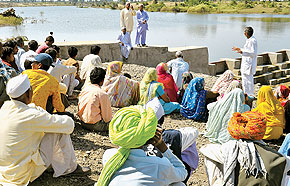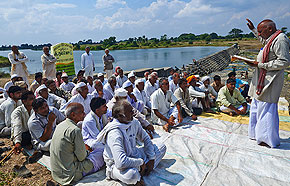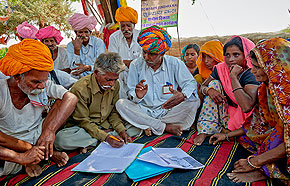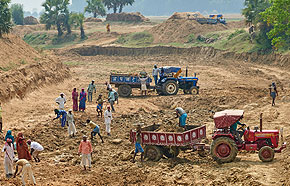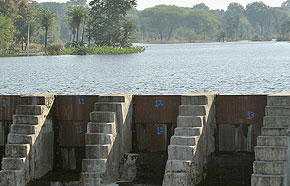The Indian Context
Water resource management is one of the most critical challenges facing the planet, especially for countries like India where agriculture is the livelihood for a major proportion of the population. Most are small farmers who depend on the yearly monsoon to grow crops. Volatile weather as a result of climate change is simply adding to their heavy burden - poor soils, lack of access to information and technology, inadequate infrastructure, inability to get credit from formal channels - keep these farmers trapped in poverty and they are among India's poorest, most vulnerable communities.
ITC's Contribution
Focusing on such farmers, ITC's Watershed Development Programme mobilises them to form water user groups and assists them to plan and carry out interventions such as building micro water harvesting structures to store water, taking various measures to reduce soil erosion, etc.
With water available for irrigation and improved soil fertility, farming is less exposed to weather risks and farmers can grow more than one crop in the year of better quantity and quality, significantly raising their incomes. Equipped with knowledge and training, working together as groups, farmers can take informed decisions towards making agriculture more secure for the future.





